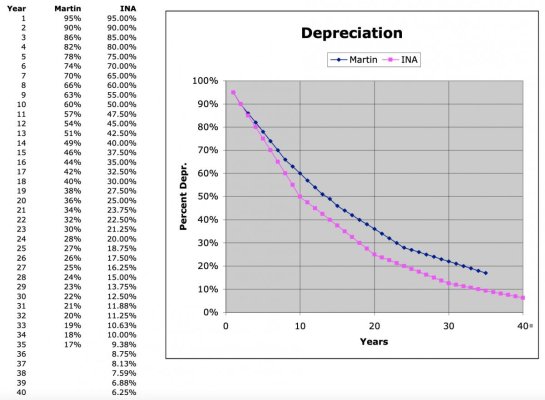FF
Guru
- Joined
- Oct 12, 2007
- Messages
- 22,552
"My dream is something that can do the loop
can cruise SOME of the canals and rivers in Europe."
Most anything you can be comfortable on has done the loop.
Canoe, Outboard (going the "wrong way") IO, you name it, its been done .
The simplest would seem to be an outboard or IO, that could fit on a trailer.
This would allow the boat to be shipped on a RO-RO (roll on roll off) to Euroland at very low cost . Especially if you consider a $10,000 boat vs a $300,000+ boat
A vessel even with the scantlings to cross oceans have many compromises that harm the usual coastal cruising.
Much interior volume is required for fuel and water, spaces are smaller so its easier to move about underway , even with multiple hand grabs.
Get home engine or a genset adaption needs love and care and spare parts too.
None of this is a bother if the boat is 60+ , but down at 40 ft an ocean capable vessel is a compromise.
A smaller boat here , a different small boat there (with Euro electrics) also makes sense.
can cruise SOME of the canals and rivers in Europe."
Most anything you can be comfortable on has done the loop.
Canoe, Outboard (going the "wrong way") IO, you name it, its been done .
The simplest would seem to be an outboard or IO, that could fit on a trailer.
This would allow the boat to be shipped on a RO-RO (roll on roll off) to Euroland at very low cost . Especially if you consider a $10,000 boat vs a $300,000+ boat
A vessel even with the scantlings to cross oceans have many compromises that harm the usual coastal cruising.
Much interior volume is required for fuel and water, spaces are smaller so its easier to move about underway , even with multiple hand grabs.
Get home engine or a genset adaption needs love and care and spare parts too.
None of this is a bother if the boat is 60+ , but down at 40 ft an ocean capable vessel is a compromise.
A smaller boat here , a different small boat there (with Euro electrics) also makes sense.

